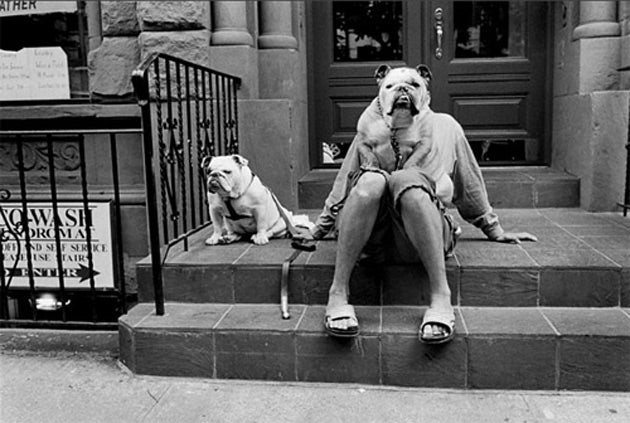Gallery celebrates the 'man of the moment'
Elliott Erwitt, the photographer famed for his sublime (and often ridiculous) images, is the star of a new exhibition

Your support helps us to tell the story
From reproductive rights to climate change to Big Tech, The Independent is on the ground when the story is developing. Whether it's investigating the financials of Elon Musk's pro-Trump PAC or producing our latest documentary, 'The A Word', which shines a light on the American women fighting for reproductive rights, we know how important it is to parse out the facts from the messaging.
At such a critical moment in US history, we need reporters on the ground. Your donation allows us to keep sending journalists to speak to both sides of the story.
The Independent is trusted by Americans across the entire political spectrum. And unlike many other quality news outlets, we choose not to lock Americans out of our reporting and analysis with paywalls. We believe quality journalism should be available to everyone, paid for by those who can afford it.
Your support makes all the difference.When Henri Cartier-Bresson wrote the preface to his 1952 collection of photography he drew on the words of the 17th-century French theologian Cardinal Retz to explain why his photographs left such a mark in the mind's eye. "There is nothing in this world that does not have a decisive moment," the French photographer remarked.
Cartier-Bresson and his fellow Magnum picture agency photographers were masters of the "decisive moment" – the art of capturing the precise instant that sums up a situation. But few of Magnum's members can claim to have mastered the "absurd moment" to quite the extent as Elliot Erwitt, a selection of whose photographs are on display at the Magnum Print Room in London until 13 November.
For much of the past 60 years he and his trusty Leica camera have criss-crossed the world documenting the touching, the crucial and the downright bizarre. Like his colleagues, Erwitt, now 82, witnessed and documented some of the most important moments of the 20th century. But it was often the photographs he took for his own personal pleasure – the snatched shots of people caught unawares – that have produced his most memorable work.
His photographs of dogs were almost always comic, verging on Kafkaesque. His 1976 shot "Felix, Gladys and Rover" is one of his best. The image, shot at eye level in New York, shows a woman's feet alongside that of her two pets, a Great Dane and a Chihuahua.
Born in 1928 to Jewish Russian parents in Paris, Erwitt spent most of his childhood in Italy, but fled Europe for the US at the outbreak of the Second World War. He took photographs in Hollywood before being drafted into military service and sent back to Europe. There he documented barracks life, and his pictures impressed Robert Capa so much that he was invited to join Magnum.
Working for such a prestigious agency brought him in contact with figures such as Richard Nixon, Fidel Castro, Humphrey Bogart and Jack Kerouac.
It was in Moscow in 1959 that he captured the famous photograph of then vice-president Nixon jabbing Nikita Krushchev in the chest with his finger – an image Nixon used to cement his image as a plain-speaking American who would not be bullied by Soviet Communism. Erwitt's photographs are regularly intimate and surprising. He once described Che Guevara as "rather a cold cookie", but you would not know it from the portrait he took in 1964 showing the Argentinian revolutionary looking relaxed and smiling.
But fame seems to hold little appeal for Erwitt. "The famous and the non-famous are the same," he once remarked. "The advantage of taking pictures of the famous is that they get published."
Join our commenting forum
Join thought-provoking conversations, follow other Independent readers and see their replies
Comments